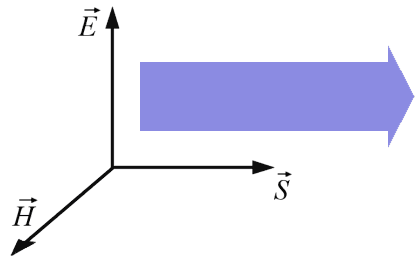Field Strength/Intensity

Figure 1: Vectors, where S is the Poynting vector, E is the electric field, H is the magnetic field

Figure 1: Vectors, where S is the Poynting vector, E is the electric field, H is the magnetic field
A current flow into a wire causes an electromagnetic field. If a generator feeds this wire with power, the electromagnetic field releases the wire and propagates in free space on the end of this wire. (see Chapter Antenna Engineering)
To describe the power of this electromagnetic field it is necessary to measuse the electric and the magnetic field. Both units are oszillating vectors as shown in the figure, where E is the electric field, H is the magnetic field, and change its direction alternating. The electromagnetic power, or energy per unit time, is called Poynting vector S. In a propagating sinusoidal electromagnetic plane wave of a fixed frequency, the Poynting vector oscillates, always pointing in the direction of propagation.
The Poynting vector is the cross product of these two vectors E and H:


The product of the units measurements (Volts per meter and Amperes per meter) causes the measurement VA/m² for the Poynting vector. This is a energy or a power per area really!

Figure 2: Nondirectional power density diminishes as geometric spreading

Figure 2: Nondirectional power density diminishes as geometric spreading
If high-frequency energy is emitted by an isotropic radiator, than the energy propagate uniformaly in all directions. Areas with the same power density therefore form spheres ( A= 4 π R² ) around the radiator. The same amount of energy spreads out on an incremented spherical surface at an incremented spheric radius. That means: the power density on the surface of a sphere is inversily proportional to the radius of the sphere.
The decreasing of the power density is proportional to the square of the distance between the transmitter and receiver. The decreasing of its components (the electric field E and the magnetic field H) is linearly dependent. Absorbing substances (rain, fog, clouds) decrease the power density additional.
